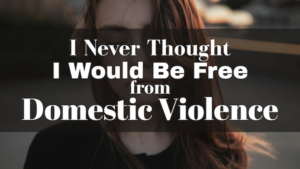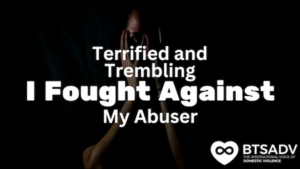No matter how many gains we make in the fight against domestic violence, victims and survivors alike cannot seem to escape one of the most troublesome questions they face when disclosing abuse: “Why don’t you just leave?” This question reveals the very real lack of awareness regarding the dangers victims and survivors of domestic violence face from the onset of abuse to the end of the relationship.
As victims and survivors of intimate partner violence, we are all too aware of the obstacles we face in our daily lives. Our reasons for not leaving – or leaving and returning to the abuser several times – are many. All of them are valid, and each of them has unique challenges associated with them. However, one of the most influential reasons victims hesitate to leave is the danger separating from an abuser poses to our lives.
Key Dangers Associated with Leaving an Abuser
Leaving dramatically increases the risk of retaliation.
In fact, leaving an abuser is the most dangerous time for a victim. Approximately 75% of all domestic violence homicides occur when the victim is attempting to leave or after ending the relationship. When there is a firearm in the home, homicide risk jumps by about 500%. Another safety concern that manifests in cases of domestic violence is stalking. About 60% of women and 44% of men who experienced stalking are stalked by their abuser. Nearly 90% of female domestic violence murder victims were also stalked in the twelve months immediately preceding their murder.
Abuse victims may find themselves facing homelessness.
Abusers commonly isolate victims from their family and friends. They do this by cutting off contact and moving to new cities where the victims do not know anyone. Additionally, because of financial abuse, they often have no financial resources available to help secure shelter when they leave. Domestic violence shelters often fill quickly, leaving no available beds open.
Therefore, victims face the impossible choice of staying with their abusers or living on the streets. Living on the streets makes them susceptible to sexual violence, assault, and other violent crimes. In 2016, about 12% of the nation’s homeless reported that they had previously experienced domestic violence. Studies performed in New York City revealed that 88% of those reporting IPV also noted homelessness as a contributing factor in why they don’t just leave the situation.
Parents fleeing an abuser with children can be dangerous.
Having children with an abuser exposes a victim to being exploited in the court, forced custody arrangements, losing custody altogether, and potential for abusers to abscond with or harm children in retaliation. Abusers often use the court system as a way to maintain control over their partner. They manipulate the children to hurt them emotionally. This includes the possibility that the abusive partner may take the children away, kidnap them, or threaten physical harm if the victim does not give in to their demands.
Safety Planning Can Help
While one can never accurately predict the exact dangers victims face when leaving an abuser, there are ways to help minimize risk. One way to do this is to create a safety plan. They are adaptable to fit active abuse, during escape, and post-abuse situations. Safety plans cannot entirely remove all risks, but they are effective in centralizing important information. Such as emergency contacts, checklists for important documents and items, and actions you can take to minimize injuries.
Many domestic violence organizations should be equipped to help with safety plans that consider a variety of circumstances. A safety plan created for an active abuse situation will look different than one created for leaving or to stay safe after the separation. They can also include planning for children, pregnancy, and pets.
How to ask for help
When contacting a domestic violence organization, ask them how to create a safety plan that will be most beneficial to you. The advocate assisting you will ask you questions about your current situation and if you are ready to leave. While they can suggest this to you or ask if you are ready to leave, they should not pressure you into leaving if you are not ready to. They can, however, provide you with the tools necessary to keep you safer during the abuse, when you are ready to leave, and after you have left.
Typically, domestic violence organizations can assist over the phone, by online chat, or email. You should use the format you feel most comfortable with. But also taking into consideration whether or not your abuse would be able to find out what you are doing. It is suggested that, if at all possible, you reach out for help using the phone or computer of someone you trust. They can also hold on to a copy of your safety plan and other documents if you cannot safely hide them from your abuser.
The National Domestic Violence Hotline has a page with detailed information about safety planning for a wide variety of circumstances.
The UN Women organization has a series of links for help with safety planning in several languages.
If you or someone you know is in an abusive relationship, there is help. You can visit the Break the Silence website at www.breakthesilencedv.org or chat with one of our helpline advocates at 855-287-1777.









